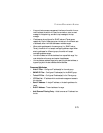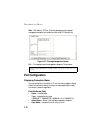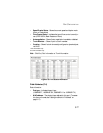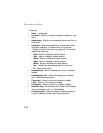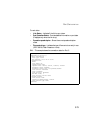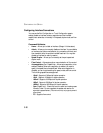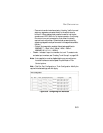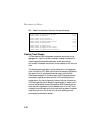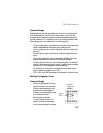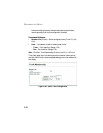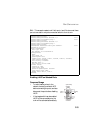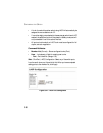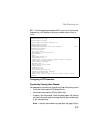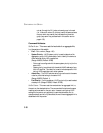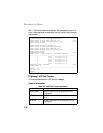
P
ORT
C
ONFIGURATION
3-83
Command Usage
Besides balancing the load across each port in the trunk, the other ports
provide redundancy by taking over the load if a port in the trunk fails.
However, before making any physical connections between devices, use
the web interface or CLI to specify the trunk on the devices at both ends.
When using a port trunk, take note of the following points:
• Finish configuring port trunks before you connect the corresponding
network cables between switches to avoid creating a loop.
• You can create up to six trunks on the switch, with up to eight ports
per trunk.
• The ports at both ends of a connection must be configured as trunk
ports.
• When configuring static trunks on switches of different types, they
must be compatible with the Cisco EtherChannel standard.
• The ports at both ends of a trunk must be configured in an identical
manner, including communication mode (i.e., speed, duplex mode and
flow control), VLAN assignments, and CoS settings.
• All the ports in a trunk have to be treated as a whole when moved
from/to, added or deleted from a VLAN.
• STP, VLAN, and IGMP settings can only be made for the entire trunk.
Statically Configuring a Trunk
Command Usage
• When configuring static trunks, you
may not be able to link switches of
different types, depending on the
manufacturer’s implementation.
However, note that the static trunks
on this switch are Cisco
EtherChannel compatible.
• To avoid creating a loop in the
network, be sure you add a static
trunk via the configuration interface
active
links
}
statically
configured



